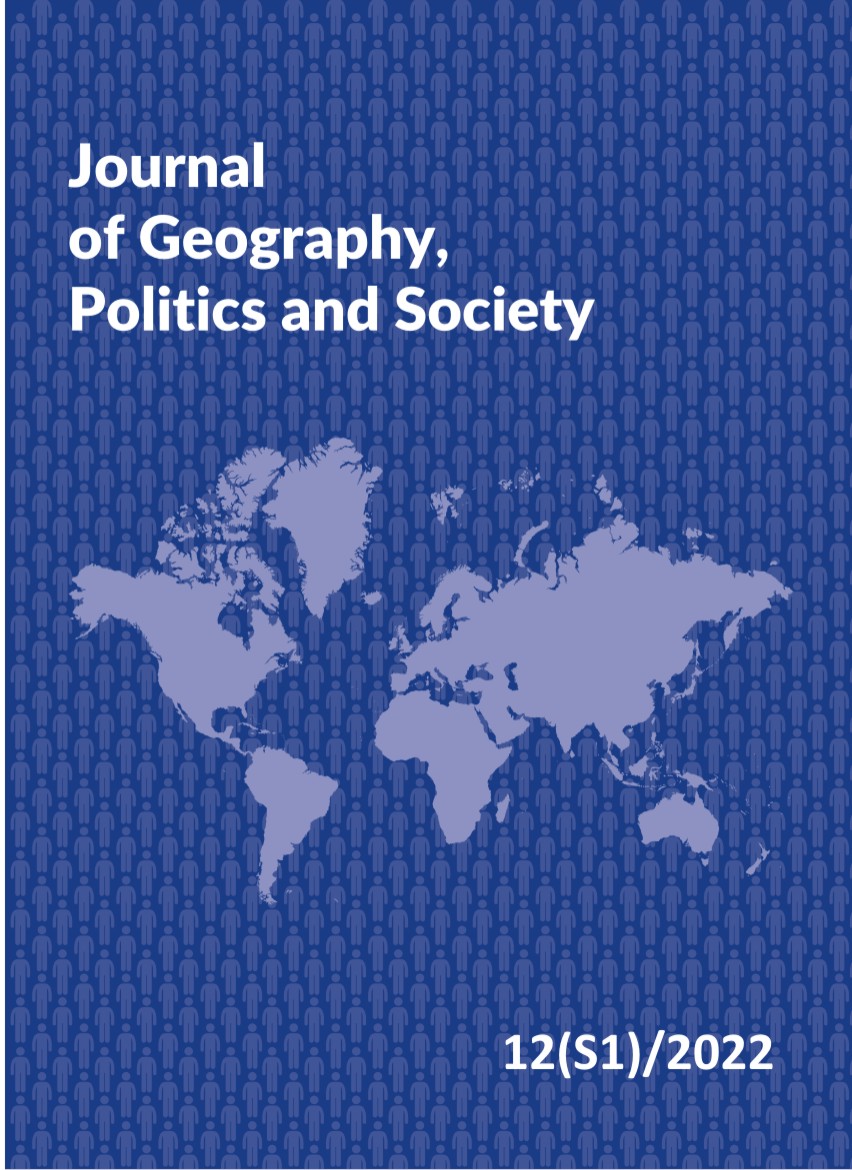Peculiarities of Ukraine’s population’s political identity through the prism of results of electoral preferences
DOI:
https://doi.org/10.26881/jpgs.2022.S1.05Keywords:
Ukraine, political identity, electoral activity, election process, territorial identity, territorial integrityAbstract
Key features of the Ukrainian society as an individual political nation have been characterized. The research is based on the election process at the level of the election to the Verkhovna Rada. In the research, data from parliamentary election campaigns held in Ukraine during the 21st century were used. Key markers for estimation of the population’s identity, the problem of language priority, the problem of historic memory, the issue of Ukraine’s unitary formation and its spatial and territorial integrity were determined. The arguments offered and the objective grounds of state integrity worded in the research prove separate, formed and integral nature of the Ukrainian political nation.
Downloads
References
Buyak B., Kuzyshyn A., 2021, Change of the Electoral Sympathies of the Voters in the Western Ukrainian Region According to the Parliamentary Elections Results in 2019, Annales Universitatis Mariae Curie-Sklodowska, sectio B – Geographia, Geologia, Mineralogia et Petrographia, 76, 145–162. doi: 10.17951/b.2021.76.0.145-162.
Casaglia A., Coletti R., Lizotte C., Agnew J., Mamadouh V., Minca C., 2020, Interventions on European nationalist populism and bordering in time of emergencies, Political Geography, 82, 102238. doi: 10.1016/j.polgeo.2020.102238.
Dnistryans`ky`j M.S., 2015, Tery`torial`no-polity`chna nezrivnovazhenist` Ukrayiny`: imanentna nemy`nuchist` chy` rukotvorny`j naslidok? (Eng. Language policy of Ukraine in comparison to the European and the post-Soviet experience?), Visny`k L`vivs`kogo universy`tetu. Seriya geografichna, 49, 68–86.
Kolodij A., 2015, Mizhregional`ni podily` v Ukrayini i deyaki pry`ncy`py` publichnogo vryaduvannya (Eng. Interregional divisions in Ukraine and some principles of public governance), [in:] T.O. Yaroshenko (ed.), Buduyemo novu Ukrayinu: zbirny`k konferenciyi (26-27 ly`stopada 2014 r., m. Ky`yiv) (Eng. We are bubbling up a new Ukraine: conference materials (November 26–27, 2014, Kyiv)), Vy`davny`chy`j dim „Ky`yevo-Mogy`lyans`ka akademiya”, Ky`yiv, 309–327.
Kowalski M., 2004, Regionalne zróżnicowanie zachowań wyborczych Polaków w latach 1989–2001 (Eng. Regional differentiation of Poles’ voting behavior in 1989–2001), Biuletyn KPZK PAN, 211, 407–430.
Krzemiński P., 2009, Zachowania wyborcze w wyborach parlamentarnych i prezydenckich w Polsce w latach 2005– 2007 – wzory przestrzennych zróżnicowań (Eng. Electoral behavior in parliamentary and presidential elections in Poland in 2005–2007 – patterns of spatial diversities), Przegląd Geograficzny, 81(2), 259–281.
Kuczabski A., Michalski T., 2014, Ukrainian post-communist transformation: Causes, consequences and threats, Quaestiones Geographicae, 33(2), 171–180. doi: 10.2478/ quageo-2014-0024.
Kuzyshyn A., 2020, Departure from the traditional electoral population sympathies of Western Ukraine region: spatial analysis of the elections to the Verhovna Rada, Geografické informácie, 24(2), 158–173. doi: 10.17846/ GI.2020.24.2.158-173.
Lasoń A., Torȯj A., 2019, Anti-liberal, Anti-Establishment or Constituency-driven? Spatial econometric analysis of Polish Parliamentary election results in 2015, European Spatial Research Policy, 26(2), 199–236. doi: 10.18778/1231- 1952.26.2.10.
Lipset М., Rokkan S., 1967, Cleavage Structures, Party Systems and Voter Alignment. Party Systems and Voter Alignments, Free Press, New York. Medvedčuk: federalìzacìâ Ukraïni – êdinì lìki oritu rozkolu (Eng. Medvedchuk: federalization of Ukraine is the only medicine against division), 2012, LB.ua, https://lb.ua/ news/2012/07/16/161051_medvedchuk_federalizatsiya_ukraini_.html (accessed 07 April 2022).
Radchenko O., Kuczabski A., Michalski T., 2014, Main factors affecting the social transformation process in Ukraine, Journal of Geography, Politics and Society, 4(1), 5–18.
Rёmmele A., 2004, Struktura razmezhevany`ya y` party`jnыe sy`stemы v Vostochnoj y` Central`noj Evrope (Eng. The disengagement structure and party systems in Eastern and Central Europe), Poly`ty`cheskaya nauka, 4, 30–51.
Superechnosti identy`chnostej v Ukrayini ta shlyaxy` yix regulyuvannya v kontekstax polity`ky` gromadyans`koyi konsolidaciyi ukrayins`koyi naciyi: Anality`chna dopovid` (Eng. Super identity of identities in Ukraine and the ways of their regulation in the context of the policy of the Ukrainian nation’s consolidation), 2015, IPiEND im. I.F. Kurasa NAN Ukrayiny`, Kyiv.
The Central Election Commission of Ukraine, www.cvk.gov. ua/ (accessed 05 April 2022).
Vistak O., Myrosh M., 2017, Electoral activity of the population of Western Ukraine border territory, Journal of Geography, Politics and Society, 7(2), 73–80. doi: 10.4467/24512249JG.17.017.6633.
Zarycki T., 1997, Nowa przestrzeń społeczno-polityczna Polski (Eng. New social and political space in Poland), Europejski Instytut Rozwoju Regionalnego i Lokalnego Uniwersytet Warszawski, Warszawa.

 Academic Scientific Journals
Academic Scientific Journals




